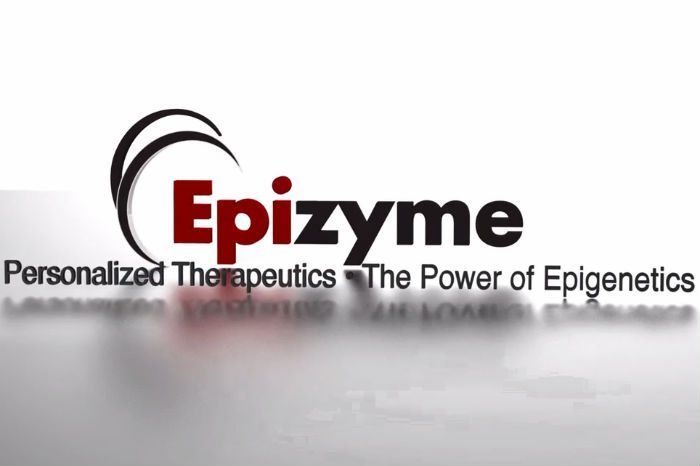
Epizyme Inc (NASDAQ:EPZM) just put out its second quarter 2016 financials, and is down nearly 13% on the numbers. We also got some guidance as to the progress of its pipeline, however, and there’s some data due early next year that could underscore the potential of the company’s pipeline. If the data comes out indicative of efficacy and tolerability, the 13% decline will likely turn out to be a discount entry point. Here’s a look at the drug in question and an outline of what we are looking for from the data as a gap closer.
The drug is called Tazemetostat, and its primarily a non-Hodgkin lymphoma, or NHL, target. It’s in an ongoing phase II, and the company reported some early data in June this year, which we’ll get to in a little more detail in a moment. First, though, let’s have a quick look at the drug and its MOA. It’s what’s called an Eh2 inhibitor. EZH2 is a gene suppressor, and in healthy individuals it works to control the process of proliferation. In cancer patients, however, it suppresses genes that would normally stop cancerous cells from replicating. This basically gives the cancer cells a free reign to proliferate, and translates to a rapid spreading in solid tumors. By inhibiting the action of EZH2, Tazemetostat stops the suppressing of genes that are associated with the cancer cells mediation, and the cancer cells don’t replicate. This (theoretically) leads to solid tumor shrinkage.
So what did the data tell us? Well, the trial is looking at a futility benchmark in five different cohorts, and the independent data monitoring committee that is overseeing the trial informed Epizyme that as of June, four out of these five had passed the futility mark. For those not familiar with the way these trials work, essentially the company is looking to pass futility in each cohort as an indicator of both safety and clinical benefit. If all five cohorts pass futility, and assuming there are no serious AEs, the trial will move into a pivotal.
Enrollment was reportedly on track, and the safety profile of the drug (as per the DMCs observations to June this year) was consistent with the profile reported in a phase I carried out previously.
Essentially, things look good.
So what are we looking for from the top line data, and what can we expect from a timeframe perspective as the company moves forward in the development process?
Well, it’s looking like all five futility points will be surpassed, and the company is on track to complete the trial at some point early 2017. We’d like to see topline that points to a statistically significant shrinking of the solid tumors associated with each cancer type in the five cohorts, across a double digit percentage size portion of the patient population. These patients are relapsed, so there’s not much available treatment out there for them right now. With this in mind, the FDA will likely be willing to go with the drug if it can show some level of benefit, and a relatively clean safety profile. To put that another way, we probably won’t have to see any complete remission or anything like that, and the agency will probably accept a couple of severe AEs across the population, and still be willing to give the drug the green light for commercialization.
From a time frame perspective, we expect to see topline from the trial at some point during the second quarter of 2017, based on enrollment completing later this year and Epizyme wrapping up the study during the first quarter of next.
What’s the market potential for this one?
NHL is a pretty lucrative space, and it’s growing fast. Analysts expect the NHL treatment market to grow to $5.45 billion by 2024, and Epizyme will be targeting a low double digit percentage share of this market with Tazemetostat. That’s only the beginning, however. As the company’s pipeline matures, the drug should hit other markets and expand upon the first approval. This is where the real revenue potential lies, and is why the upcoming phase II release is so important. An efficacy readout will underline the drugs potential, and give the company (and it shareholders) something to look forward to over the next few years.
One to watch.




